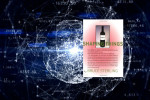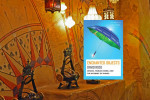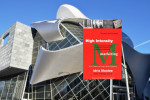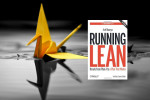Enchanted Objects
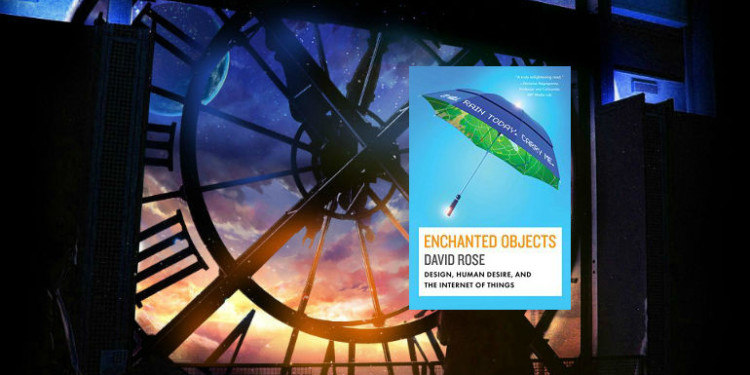
Enchanted Objects: Design, Human Desire, and the Internet of Things by David Rose
Enchanted objects “embed small amounts of computation, connectivity, and interaction” to achieve a friendly, unobtrusive, and helpful utility that doesn’t overwhelm with technological power.
Enchantment is experienced as a flow within life, not a jarring disruption. Enchanted objects are at-hand, passive, polite, and ready to help. These mostly single-purpose products and tools are a contrast to over-loaded and over-powering devices and technologies that clamor for attention.
In Enchanted Objects: Design, Human Desire, and the Internet of Things, David Rose explores possible technology futures and finds every day objects augmented with single-purpose powers to be the most desirable. Rose is the founder of Ambient Devices, which makes at-a-glance information displays. The company’s ambient orb is the prototypical enchanted object–providing just-in-time information through color and subtle display.
Rather than cramming massive technological capabilities into a small space, enchanted objects fit into your life and provide assistance when needed. They signal and communicate at a minimal awareness level and do not overwhelm with alarms and interruptions.
Enchanted objects are more like hand tools than computers. They are specialized and can be redundant. There is no drive for convergence and density of functions. Rather than concentrating information and applications within a single device, enchanted objects will spread information and intelligence across many artifacts. Enchanted objects can populate our lives because they embed specific functions and provide information without a large cognitive drain.
Rose’s archetypical enchanted object is an analog barometer. He points out that it never needs to be charged or upgraded. It has no buttons, levers, or knobs. It is “glanceable”, unobtrusive, and always at the ready to assist. The device serves to achieve a single purpose and conveys just the right amount of information.
Most of Rose’s examples in the book are either tools or information displays already present in our lives that are enchanted with just the right dose of super powers. Wallets that stiffen or bloat depending on your cash balance; trash cans that signal the need for pickup; and umbrellas that glow when rain is forecast. Some recent examples include
- chopsticks that can tell if food is safe,
- a light that tells you how much water you are using
- a tremor-cancelling spoon
- Mother: a household automation kit
Four futures
Rose foresees three dystopian futures and one desirable outcome. Each takes an existing technology theme and projects its development forward.
Terminal World
This future is dominated by the “glass slab”–exemplified by the iPad, iPhone, and iPod. Humans spend an increasing amount of time staring into black glass panels of all sizes. The pixel rules. Development and progress focus on the screen–more pixels and apps crammed into every screen. Manufacturers rejoice in selling multiple screens to every available consumer.
“Terminal” is a play on words because it describes both the cult of the pixel as well as a technological dead end. In this future, we become enslaved to denser and denser pixelated displays that vie for our attention.
Prosthetics
This trajectory locates technology on the person, to fortify and enhance us with more capabilities, to, in a sense, give us superpowers.
Humans are augmented through implants and exoskeletons to become better, faster, and stronger than we are today. Although there are many benefits of technology to our bodies, Rose sees augmentation of perception (e.g., Google Glass) as divisive. Rose believes individual perceptual filters and customized enhancement of vision will fragment our realities and lead to lack of social cohesion because everyone will have a different reality.
Animism
Animism centers on our fantasy that technology can learn us, rather than our having to learn it.
Social robots surround us in this future–technology is sculpted to resemble us. We creep towards the “uncanny valley” where fabricated beings resemble humans but lack natural human attributes and qualities. We are surrounded by single-purpose, vacuous, servants. Rose does not mention it, but this is the departure point for machine rebellion (e.g., I, Robot and Cylons).
Enchanting Everyday Objects
I simply believe that the most promising and pleasing future is where technology infuses ordinary things with a bit of magic to create a more satisfying interaction and evoke an emotional response,
This is Rose’s preferred alternative. Here, ordinary objects are helpful and unobtrusive. They embody just the right amount of intelligence. Our daily interactions are still with physical objects, many of which we know today, but their power has increased through selective enchantment.
More about Enchanted Objects
- David Rose on the Daily Show with Jon Stewart
- EnchantedObjects.com
- Henry Petroski’s review of Enchanted Objects in the Wall Street Journal
- Brad Feld’s review of Enchanted Objects
Enchanted Objects: Design, Human Desire, and the Internet of Things
